
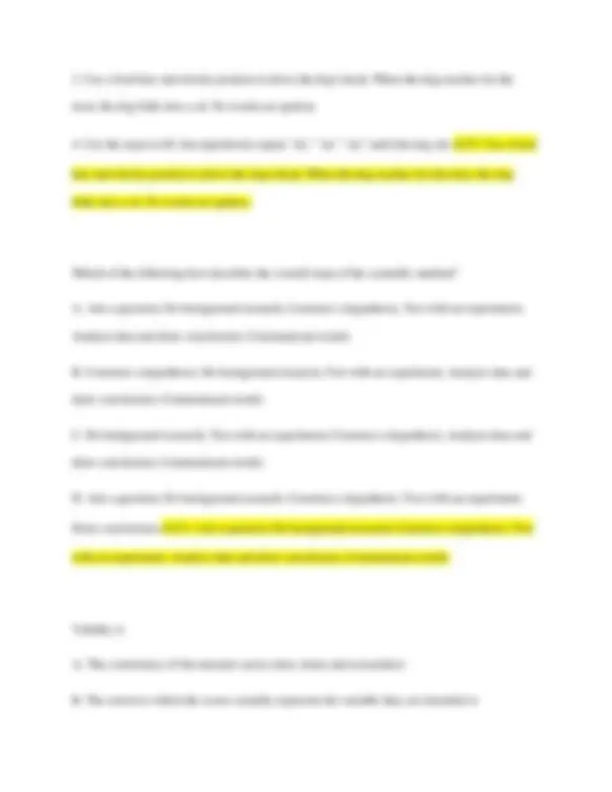
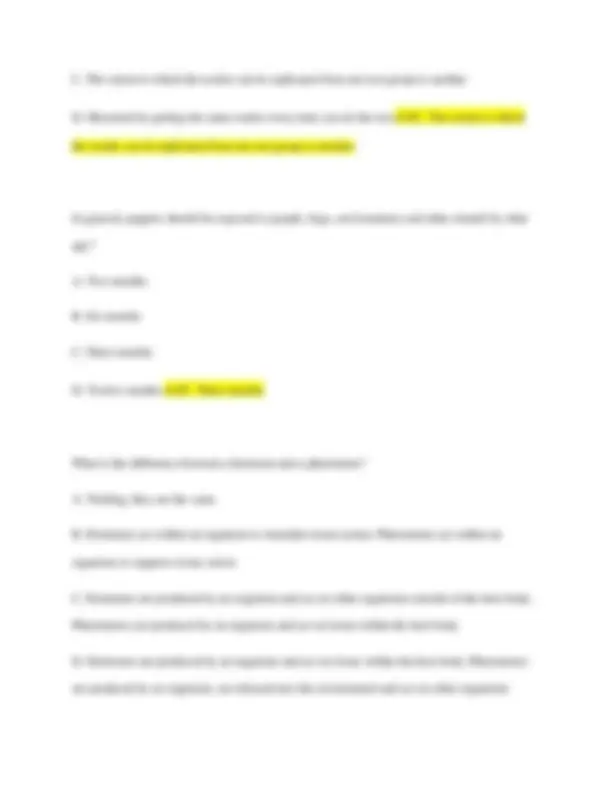
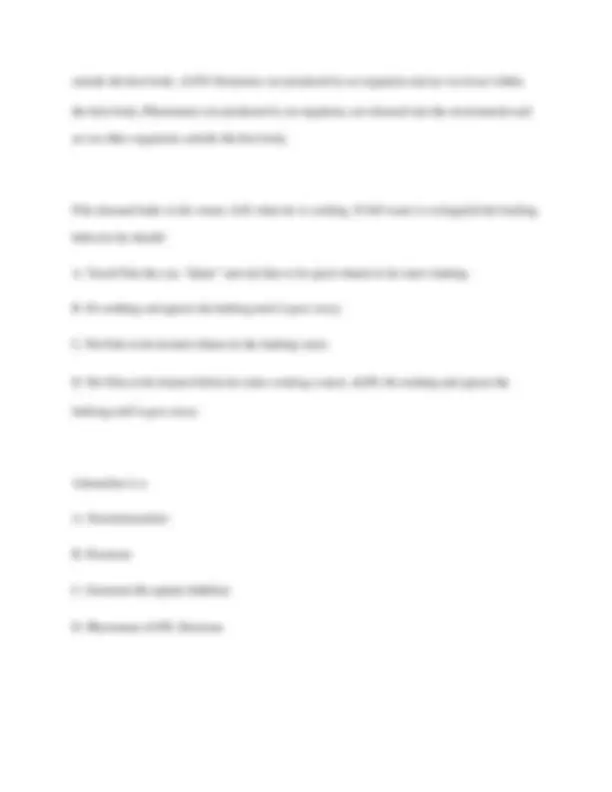
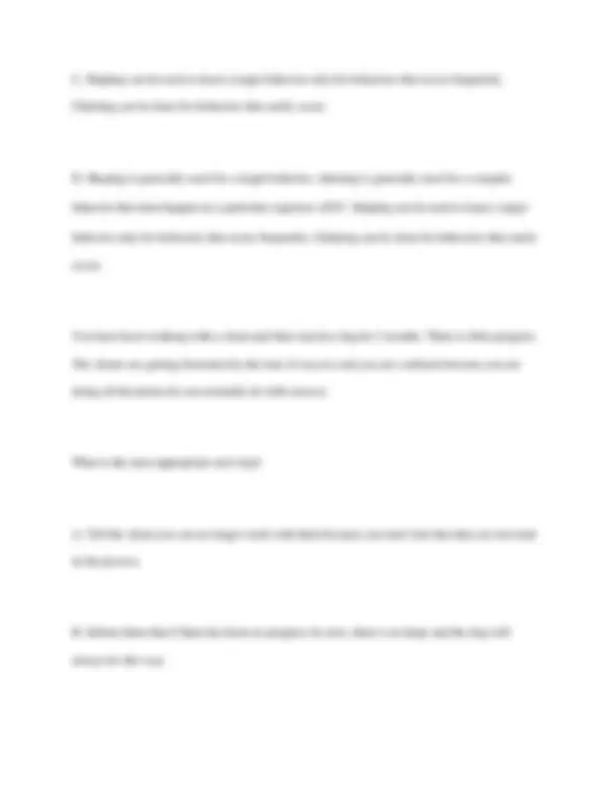
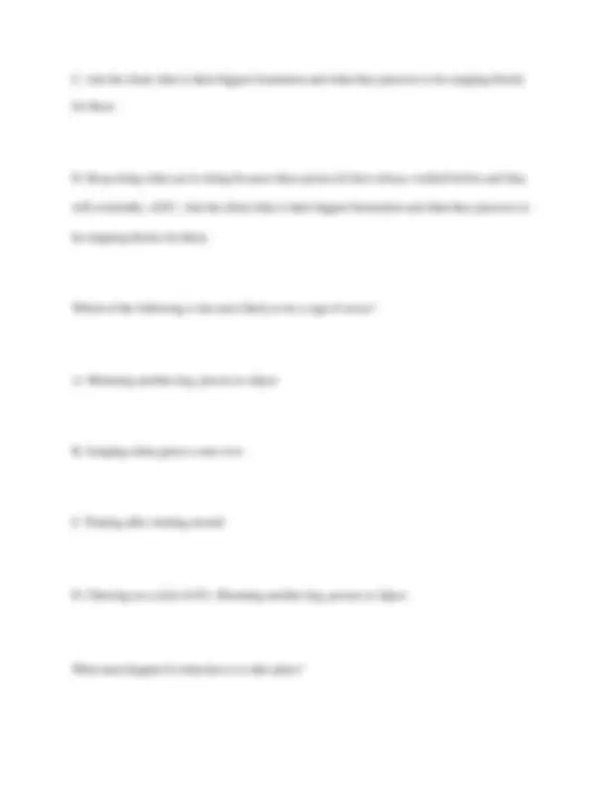
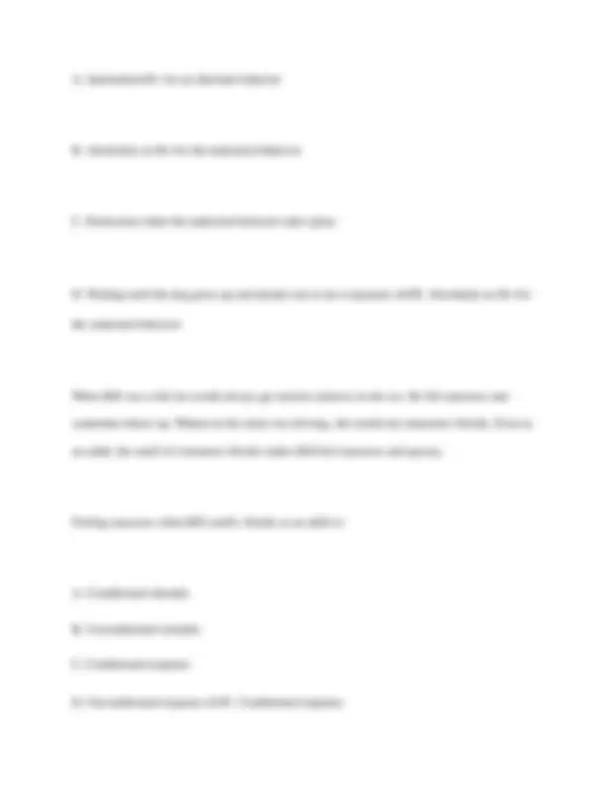
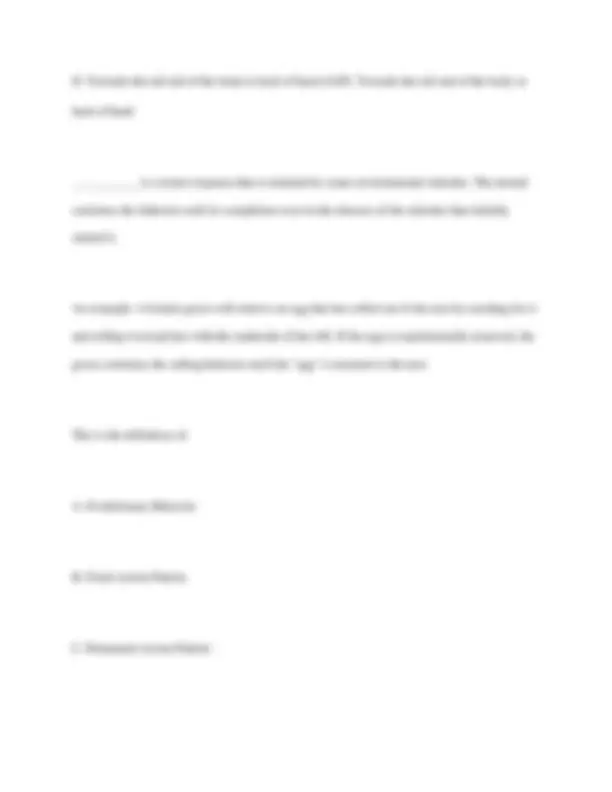
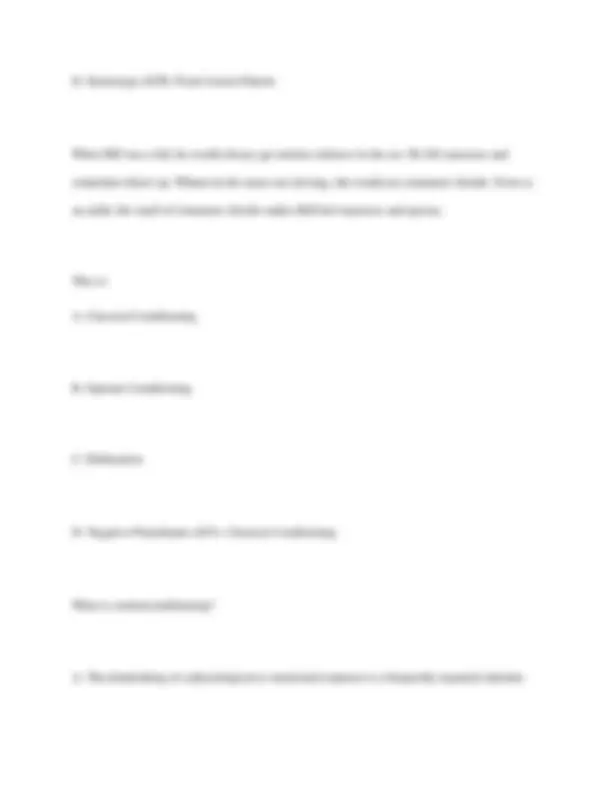
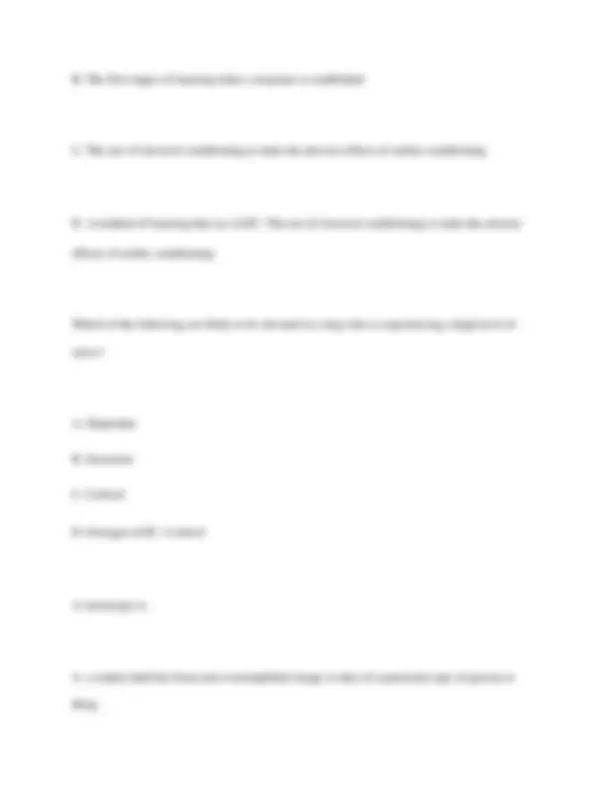
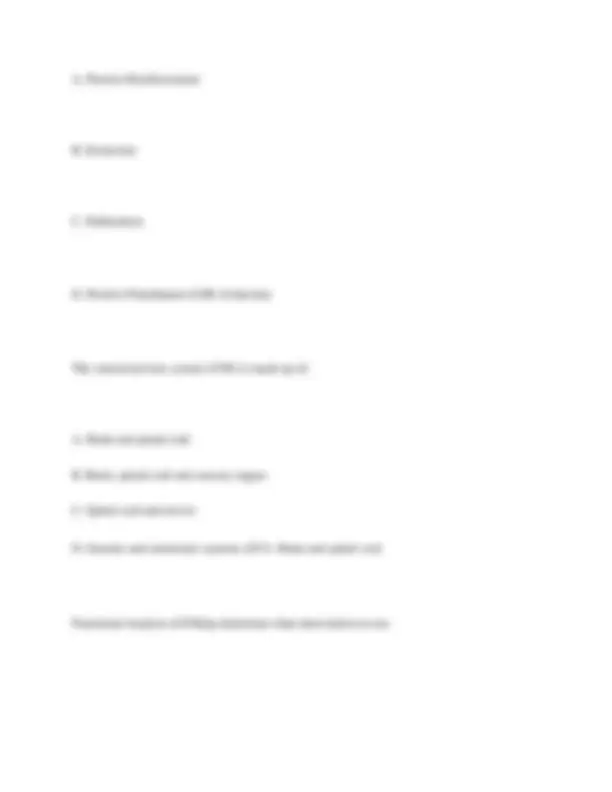
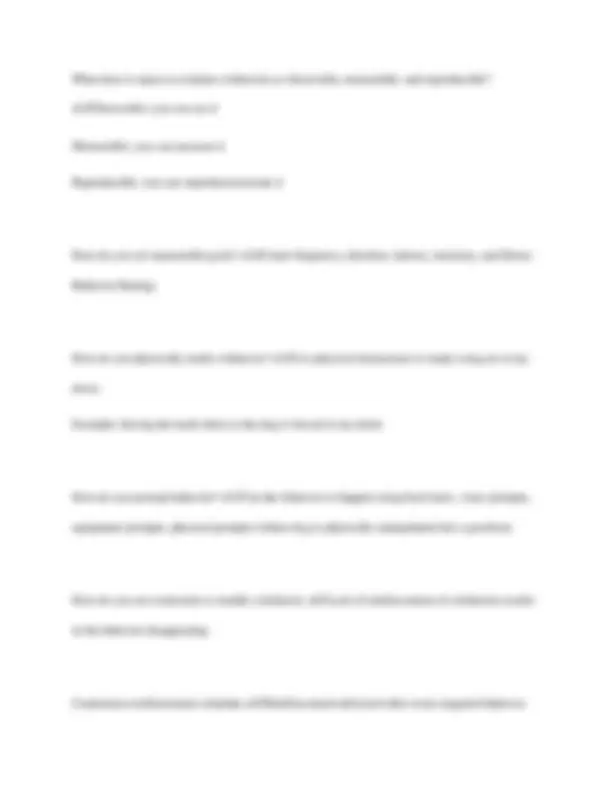
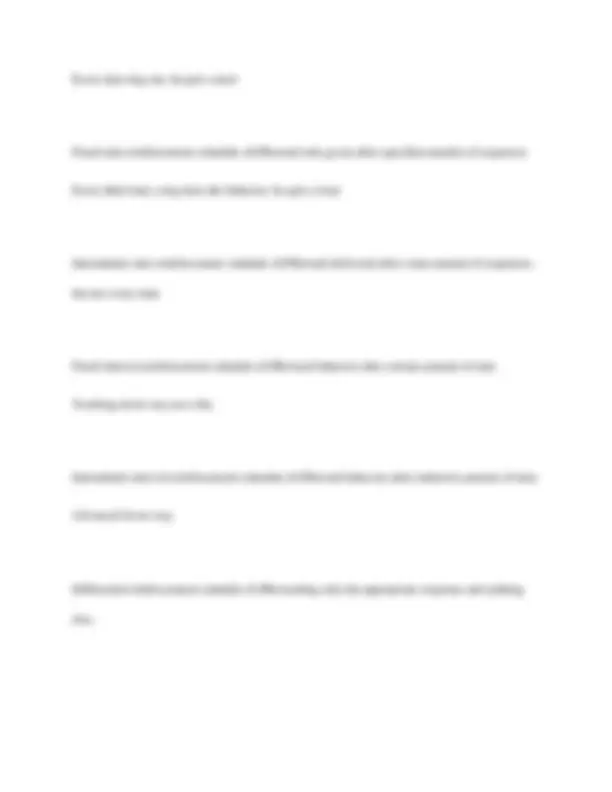
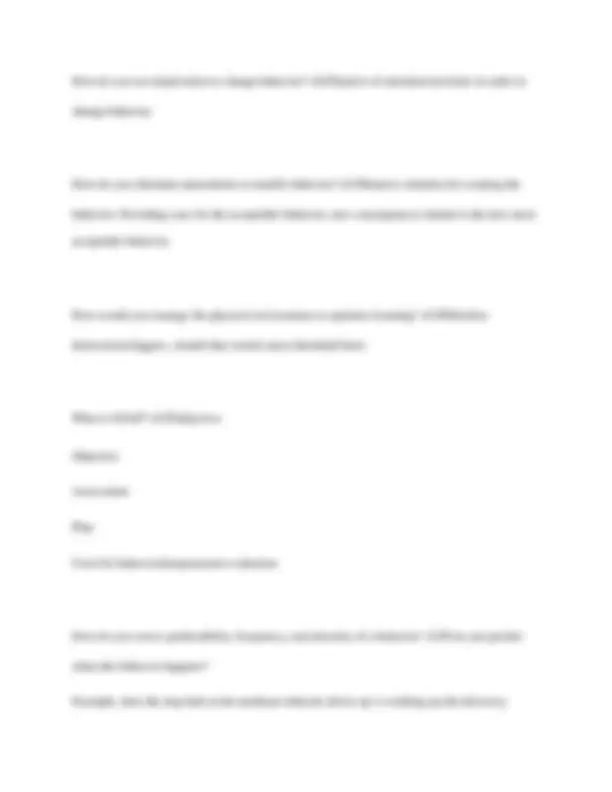
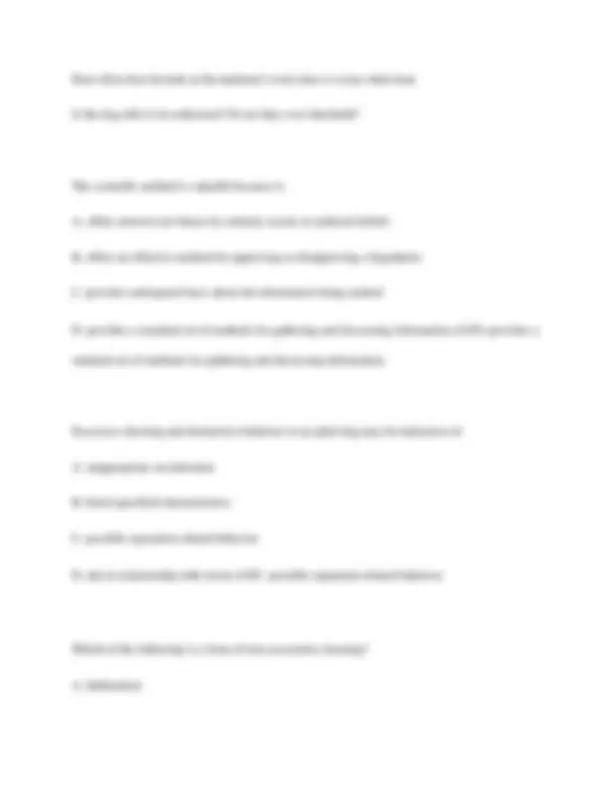
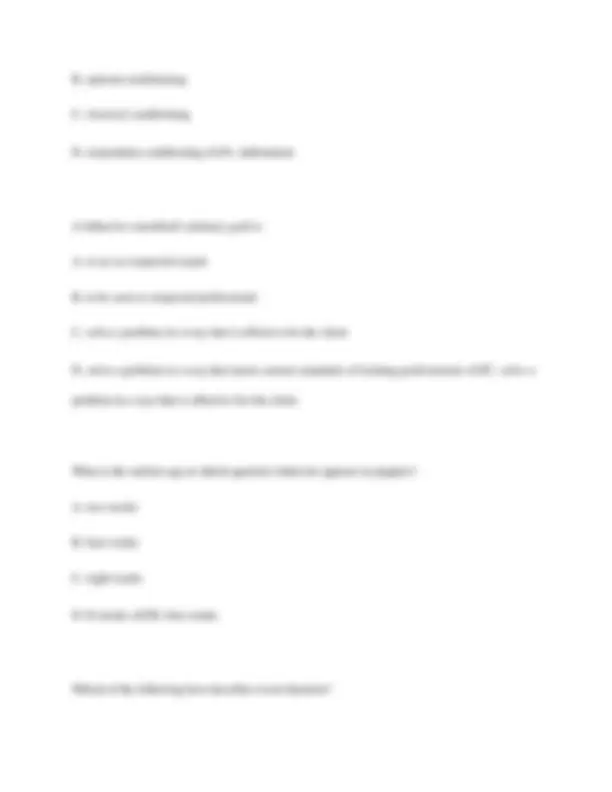
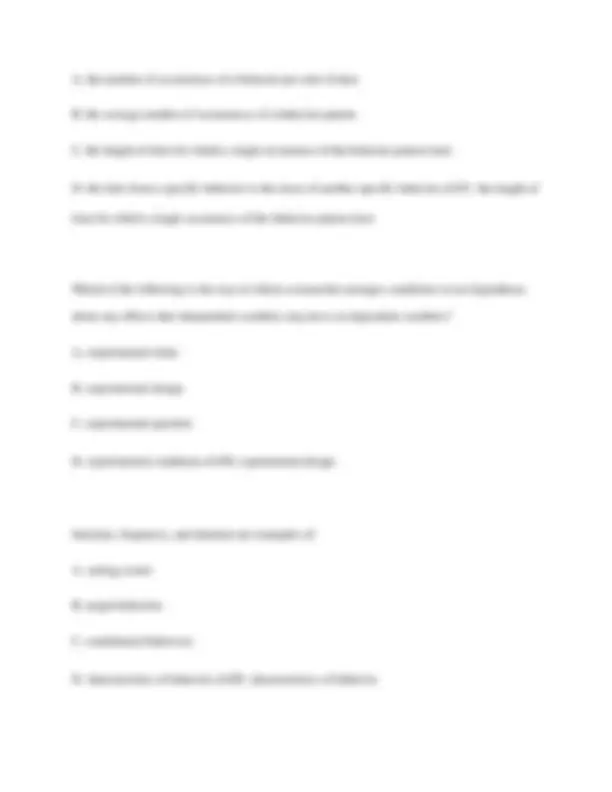
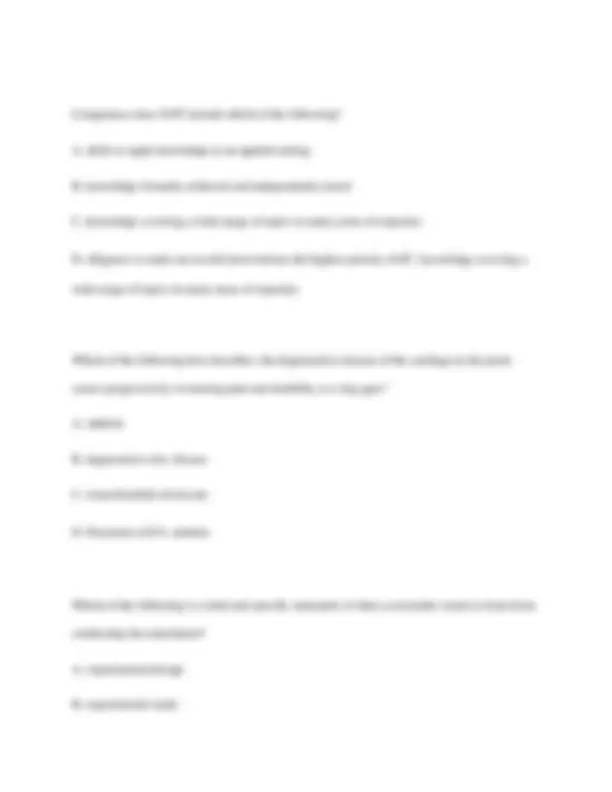
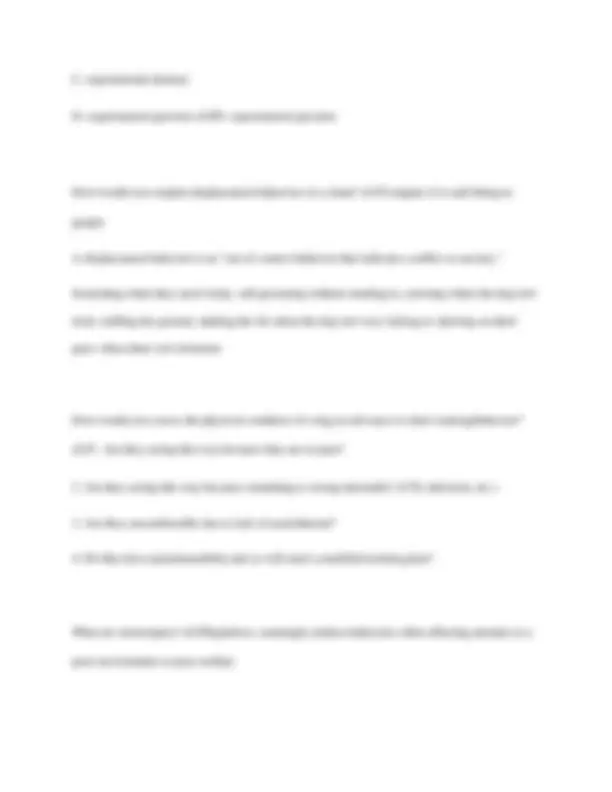
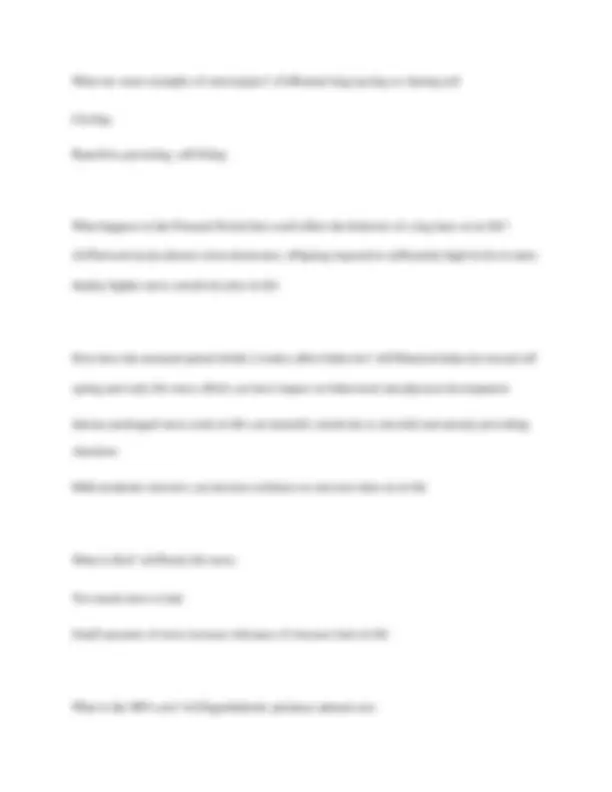
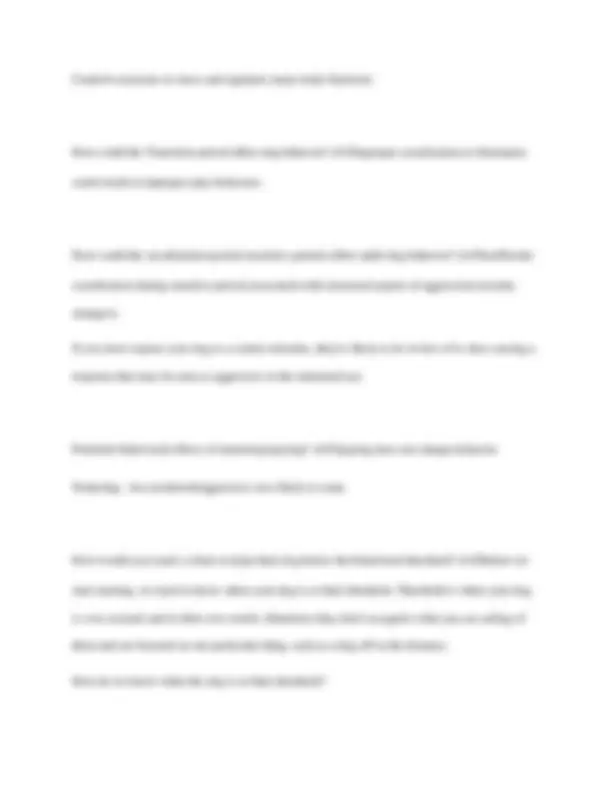

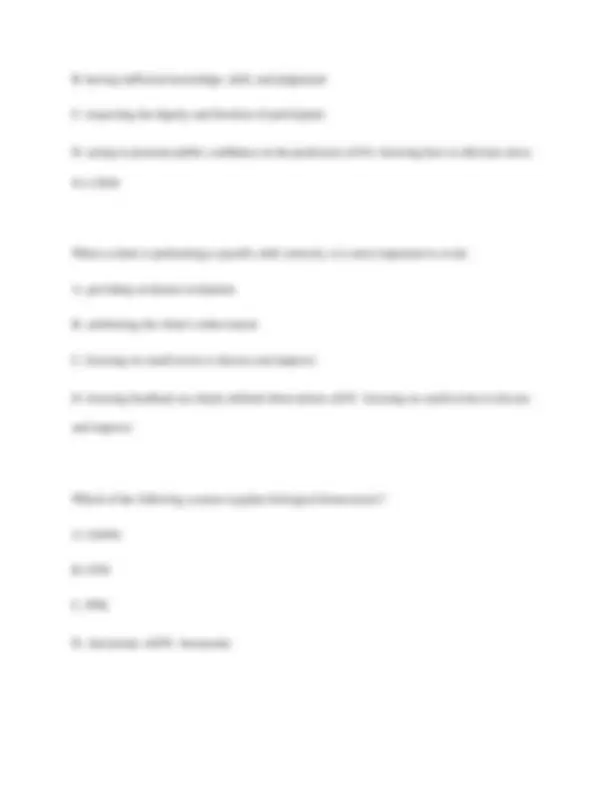
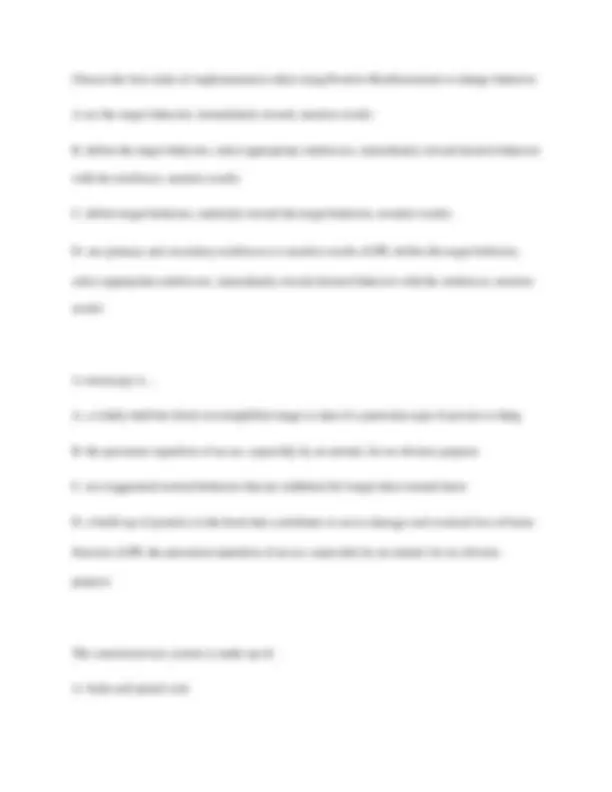
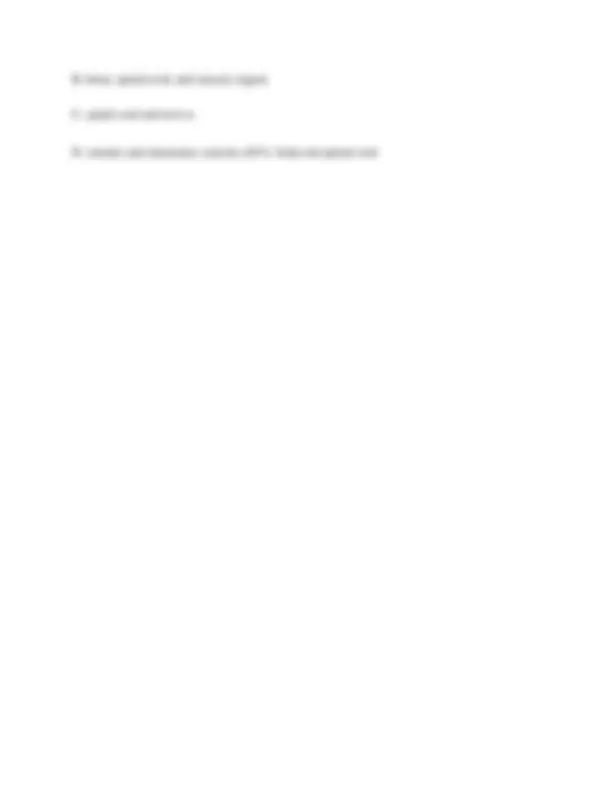


Study with the several resources on Docsity

Earn points by helping other students or get them with a premium plan


Prepare for your exams
Study with the several resources on Docsity

Earn points to download
Earn points by helping other students or get them with a premium plan
Community
Ask the community for help and clear up your study doubts
Discover the best universities in your country according to Docsity users
Free resources
Download our free guides on studying techniques, anxiety management strategies, and thesis advice from Docsity tutors
The length of time from a specific cue to the onset of behavior is the ✔✔Latency The peripheral nervous system includes the ✔✔Autonomic system The autonomic nervous system is a control system that acts largely unconsciously and regulates bodily functions, such as the heart rate, digestion, respiratory rate, pupillary response, urination, and sexual arousal. This system is the primary mechanism in control of the fight-or-flight response. What is the number of times a response occurs during an observational period? ✔✔Frequency A dog engaging in excessive self-licking may be ✔✔Relaxed and being offered little stimulation Behavior analysts work primarily with ✔✔specific, defined behaviors Which of the following best describes a professional code of ethics? ✔✔Identifies ethical goals of the profession If a behavior occurs during 25 out of 200 sample intervals, what is the score for this one-zero
Typology: Exams
1 / 32

This page cannot be seen from the preview
Don't miss anything!

























The length of time from a specific cue to the onset of behavior is the ✔✔Latency
The peripheral nervous system includes the ✔✔Autonomic system
The autonomic nervous system is a control system that acts largely unconsciously and regulates bodily functions, such as the heart rate, digestion, respiratory rate, pupillary response, urination, and sexual arousal. This system is the primary mechanism in control of the fight-or-flight response.
What is the number of times a response occurs during an observational period? ✔✔Frequency
A dog engaging in excessive self-licking may be ✔✔Relaxed and being offered little stimulation
Behavior analysts work primarily with ✔✔specific, defined behaviors
Which of the following best describes a professional code of ethics? ✔✔Identifies ethical goals
of the profession
If a behavior occurs during 25 out of 200 sample intervals, what is the score for this one-zero
sampling? ✔✔0.
Which of the following involves the systematic manipulation of environmental contingencies? ✔✔Functional analysis
What is the range for a normal resting breathing rate for a dog?
A. 5-30 bpm
B. 10-20 bpm
C. 10-35 bpm
D. 12-40 bpm ✔✔C. 10-35 breaths per minute
When training a dog to sit, using positive reinforcement, which cue would help your dog the most to learn this behavior?
C. The extent to which the results can be replicated from one test group to another
D. Measured by getting the same results every time you do the test ✔✔C. The extent to which
the results can be replicated from one test group to another
In general, puppies should be exposed to people, dogs, environments and other stimuli by what age?
A. Two months
B. Six months
C. Three months
D. Twelve months ✔✔C. Three months
What is the difference between a hormone and a pheromone?
A. Nothing, they are the same
B. Hormones act within an organism to stimulate tissue action; Pheromones act within an organism to suppress tissue action
C. Hormones are produced by an organism and act on other organisms outside of the host body; Pheromones are produced by an organism and act on tissue within the host body.
D. Hormones are produced by an organism and act on tissue within the host body; Pheromones are produced by an organism, are released into the environment and act on other organisms
outside the host body. ✔✔D. Hormones are produced by an organism and act on tissue within
the host body; Pheromones are produced by an organism, are released into the environment and act on other organisms outside the host body.
Fido demand barks at his owner, Jeff, when he is cooking. If Jeff wants to extinguish the barking behavior he should:
A. Teach Fido the cue, "Quiet" and ask him to be quiet whenever he starts barking.
B. Do nothing and ignore the barking until it goes away.
C. Put Fido in his kennel whenever the barking starts.
D. Put Fido in his kennel before he starts cooking a meal. ✔✔B. Do nothing and ignore the barking until it goes away.
Adreneline is a:
A. Neurotransmitter
B. Hormone
C. Serotonin Re-uptake Inhibitor
D. Pheromone ✔✔B. Hormone
Jane's dog likes to lick the dirty dishes as the dishwasher gets loaded each night. Jane wants her to decrease this behavior. Which of the following should Jane do to decrease the likelihood that the dog will try to lick the dirty dishes in the future?
A. Give the dog a treat for laying on her bed.
B. Put her outside when she is doing the dishes.
C. Close the dishwasher door as the dog approaches the dishwasher.
D. Yell at the dog and tell her she is being naughty. ✔✔C. Close the dishwasher door as the dog
approaches the dishwasher.
Which is not a difference between shaping and chaining?
A. Shaping always moves forward; chaining can be done forward or backward
B. In shaping, reinforcers are provided along the way; in chaining the main reinforcer is provided at the end of the chain
C. Shaping can be used to learn a target behavior only for behaviors that occur frequently. Chaining can be done for behaviors that rarely occur.
D. Shaping is generally used for a single behavior; chaining is generally used for a complex behavior that must happen in a particular sequence ✔✔C. Shaping can be used to learn a target
behavior only for behaviors that occur frequently. Chaining can be done for behaviors that rarely occur.
You have been working with a client and their reactive dog for 3 months. There is little progress. The clients are getting frustrated by the lack of success and you are confused because you are doing all the protocols you normally do with success.
What is the most appropriate next step?
A. Tell the client you can no longer work with them because you don't feel that they are invested in the process.
B. Inform them that if there has been no progress by now, there is no hope and the dog will always be this way.
A. Intermittent R+ for an alternate behavior
B. Absolutely no R+ for the undesired behavior
C. Distraction when the undesired behavior takes place
D. Waiting until the dog gives up and decides not to do it anymore ✔✔B. Absolutely no R+ for
the undesired behavior
When Bill was a kid, he would always get motion sickness in the car. He felt nauseous and sometimes threw up. Whenever his mom was driving, she would eat cinnamon Altoids. Even as an adult, the smell of cinnamon Altoids makes Bill feel nauseous and queasy.
Feeling nauseous when Bill smells Altoids as an adult is:
A. Conditioned stimulus
B. Unconditioned stimulus
C. Conditioned response
D. Unconditioned response ✔✔C. Conditioned response
When Bill was a kid, he would always get motion sickness in the car. He felt nauseous and sometimes threw up. Whenever his mom was driving, she would eat cinnamon Altoids. Even as an adult, the smell of cinnamon Altoids makes Bill feel nauseous and queasy.
The smell of the Altoids (to Bill as an adult) is:
A. Conditioned stimulus
B. Unconditioned stimulus
C. Conditioned response
D. Unconditioned response ✔✔A. Conditioned stimulus
When Bill was a kid, he would always get motion sickness in the car. He felt nauseous and sometimes threw up. Whenever his mom was driving, she would eat cinnamon Altoids. Even as an adult, the smell of cinnamon Altoids makes Bill feel nauseous and queasy.
D. Towards the tail end of the body or back of head ✔✔D. Towards the tail end of the body or
back of head
___________ is a motor response that is initiated by some environmental stimulus. The animal continues the behavior until its completion even in the absence of the stimulus that initially started it.
An example: A female goose will retrieve an egg that has rolled out of the nest by reaching for it and rolling it toward her with the underside of her bill. If the egg is experimentally removed, the goose continues the rolling behavior until the "egg" is returned to the nest.
This is the definition of:
A. Evolutionary Behavior
B. Fixed Action Pattern
C. Permanent Action Pattern
D. Stereotypy ✔✔B. Fixed Action Pattern
When Bill was a kid, he would always get motion sickness in the car. He felt nauseous and sometimes threw up. Whenever his mom was driving, she would eat cinnamon Altoids. Even as an adult, the smell of cinnamon Altoids makes Bill feel nauseous and queasy.
This is:
A. Classical Conditioning
B. Operant Conditioning
C. Habituation
D. Negative Punishment ✔✔A. Classical Conditioning
What is counterconditioning?
A. The diminishing of a physiological or emotional response to a frequently repeated stimulus
B. the persistent repetition of an act, especially by an animal, for no obvious purpose
C. an exaggerated normal behavior that are exhibited for longer than normal times
D. a build-up of proteins in the brain that contributes to nerve damage and eventual loss of brain function ✔✔B. the persistent repetition of an act, especially by an animal, for no obvious
purpose
Choose the best order of implementation when using Positive Reinforcement to change behaivor:
A. See the target behavior, immediately reward, monitor results
B. Define the target behavior, select appropriate reinforcers, immediately reward with the reinforcer, monitor results
C. Define target behavior, randomly reward the target behavior, monitor results
D. Use primary and secondary reinforcers and monitor results ✔✔B. Define the target behavior,
select appropriate reinforcers, immediately reward with the reinforcer, monitor results
Hormones modify behavior by affecting different body systems. Which is NOT a way that hormones influence behavior?
A. Sensory and/or perceptual mechanisms
B. Development or activity of the central nervous system
C. Influence muscles important in the execution of behavior
D. Enhance operant learning ✔✔D. Enhance operant learning
Roxi is a lab who loves to steal bread off the counter. Her owners want her to stop counter- surfing and keep her feet on the floor. They removed everything from all the counters in the kitchen. After a couple of days of extra "feet on the counter" behavior, Roxi quit jumping up to see what was up there. What happened?
What does it mean to evaluate a behavior as observable, measurable, and reproducible? ✔✔Observable: you can see it
Measurable: you can measure it
Reproducible: you can reproduce/recreate it
How do you set measurable goals? ✔✔Count frequency, duration, latency, intensity, and Direct
Behavior Ratings
How do you physically mold a behavior? ✔✔Use physical interactions to make a dog sit or lay
down
Example: having the leash short so the dog is forced to lay down
How do you prompt behavior? ✔✔Cue the behavior to happen using food lures, voice prompts,
equipment prompts, physical prompts (where dog is physically manipulated into a position)
How do you use extinction to modify a behavior ✔✔Lack of reinforcement of a behavior results
in the behavior disappearing
Continuous reinforcement schedule ✔✔Reinforcement delivered after every targeted behavior
Every time dog sits, he gets a treat
Fixed ratio reinforcement schedule ✔✔Reward only given after specified number of responses
Every third time a dog does the behavior, he gets a treat
Intermittent ratio reinforcement schedule ✔✔Reward delivered after some amount of responses,
but not every time
Fixed interval reinforcement schedule ✔✔Reward behavior after certain amount of time
Teaching down stay uses this
Intermittent interval reinforcement schedule ✔✔Reward behavior after unknown amount of time
Advanced down stay
Differential reinforcement schedule ✔✔Rewarding only the appropriate response and nothing
else;